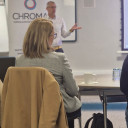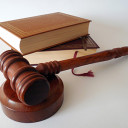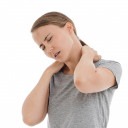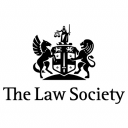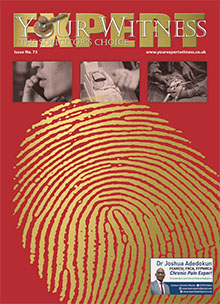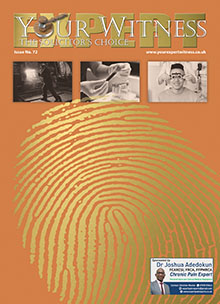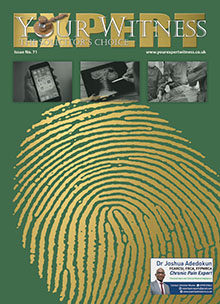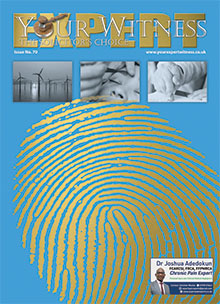MATERIALS TESTING does not necessarily involve a specific test to an ISO:BS: EN standard – and there are many such standards.
It involves a number of stages before specific standard tests are carried out, if indeed necessary. These stages involve the following steps :
- Detailed observation and inspection of the item/material involved;
- Discussions with persons connected with the incident concerned;
- Appropriate specific material testing where and if appropriate.
Not infrequently, the testing involves the observation/inspection of the item involved and appropriate discussions with persons concerned.
It should be recognised that materials cover a very wide range. This article is concerned with metals (such as iron, steel, copper, brass, aluminium), glass, plastic, wood paper, etc.
One example concerns a young girl who, because of the smell of paint, was asked by her mother to open her bedroom window.
In attempting to do this, the window stuck, her arm went through the glass resulting in a serious gash to her arm.
The problem was that the window had been incorrectly painted regarding the rebate sections and not left open to dry. This was an example where the author acted in agreement with the parties concerned as a ‘single joint expert’. Out-of-court damages were settled.
Other cases require the reconstruction of an item to decide the point of failure and how applicable this was to a claim being made. A typical example is of a failed glass bottle/drinking glass resulting in personal injury. Not all such failures are the result of inferior material.
Many cases are a result of civil actions, but an example involving criminal proceedings concerned the use/potential distribution of cannabis. It was established that the two plastic packets concerned were from different sources – a very unlikely occurrence in the context of the investigation. As a result, the more serious charge of distribution was dropped.
In certain cases material tests against specified standards are essential to determine whether the material used meets the required specifications – ie fitness for purpose. These tests should be carried out to recognised International (ISO), European (EN) and British Standards (BS), and preferably conducted by laboratories accredited to ISO:17025 – the recognised quality management system for testing and calibration laboratories.
In the UK, the United Kingdom Accreditation Service (UKAS) is the body recognised by Government to carry out accreditation to IS0: 17025 Such tests fall into a wide range of categories, not just materials. However, here we are concerned with materials. So what tests are available to the materials expert witness to help in his/her investigations?
Broadly, they fall into a range of categories which form the subject of the remainder of this article. This range is not comprehensive but is designed to illustrate what is available. Some testing can be expensive, depending on what is required, and thus it is important that the materials consultant is both familiar with the techniques available and the costs involved.
Mechanical testing: Such testing determines the ability of the material/article to stand up to the mechanical requirements. Examples of such tests include high, room temperature and cryogenic tensile and impact testing, welding suitability, etc.
Physical testing: This can include material hardness and structure, electrical and magnetic properties, all of which can have a bearing on fitness for purpose.
Included in this field is optical microscopy*.
Analytical testing: Quite frequently the analysis of material is required.
Although traditional ‘wet chemical analysis’ is available, most analyses are carried out by physical techniques such as Transmission Election Microscopy (TEM)*, X-Ray Florescence Analysis (XRF), Analytical Scanning Electron Microscopy (ASEM)*, Inductive Coupled Plasma (ICP), Mass Spectroscopy (MS), Infrared Spectroscopy (IR), etc.
For environmental examinations involving organic materials, the Environmental Scanning Electron Microscope (ESEM)* is a powerful and relatively recent development.
The techniques indicated by an asterisk (*) also allow detailed examinations to be carried out on the surfaces and structures of failed materials/items.
Non-destructive testing: This is a specialist area usually employed to detect flaws in products pre- and post-delivery, and involve such techniques as ultrasound, dye penetrant, flourescent magnetic particle and x-radiography.
Calibration: All equipment used in testing needs to be calibrated against traceable standards, otherwise test results may be unreliable and thus give rise to erroneous conclusions and hence potentially dubious expert evidence (accreditation to ISO: 17025 refers).
Surface failure: There are instances of surface failure, and corrosion is among them (Your Witness, spring 2007, page 36). However, surfaces fail for a range of reasons; unsuitability (fitness for purpose) and lubrication are two examples. The optical microscope and ASEM are powerful tools for such examinations.
Engineering design: It is not uncommon for engineering design faults to contribute towards material failures. The classical examples of these are where high stresses are induced typically due to non-radiused changes in design. Perhaps one of the more notable of these was associated with the window design of the Comet aircraft. However, many examples exist such as nonradiused keyways, changes in section size of drive shafts, etc.
Materials examination and testing can involve a wide range of activities, and it is essential that the expert witness:
- Is familiar with the techniques available;
- Recognises the costs involved with each technique;
- Is able to recommend appropriate techniques; and
- Is in a position to understand and interpret the outcome of the results.



 “Speculate before you accumulate. I am a long term regular writer and advertiser in 'Your Expert Witness - the Solicitor’s Choice'. This investment pays me substantive dividends; I get more Expert Witness work with every issue. Not only solicitors and barristers but also judges seem to read it. It is a win-win situation. Success breeds success; I must continue to write and advertise.”
“Speculate before you accumulate. I am a long term regular writer and advertiser in 'Your Expert Witness - the Solicitor’s Choice'. This investment pays me substantive dividends; I get more Expert Witness work with every issue. Not only solicitors and barristers but also judges seem to read it. It is a win-win situation. Success breeds success; I must continue to write and advertise.”

